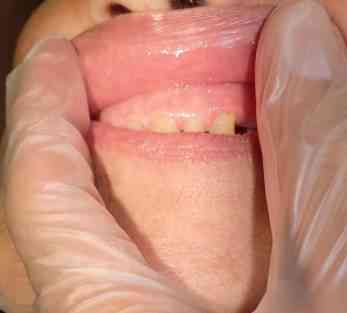Figura 4: Ausencia de lubricación en mucosa labial inferior.

Figura 5: Mucosa labial superior con lubricación salival en forma de grumos.

BIBLIOGRAFÍA
1. Marques Soares MS, Chimenos Küstner E, Subirá Pifarre C, Rodríguez De Rivera ME, Lopéz Lopéz J. Association of burning mouth síndrome with xerostomía and medicines. Med Oral Patol Oral Cir Bucal. 2005; 10:301-8.
2. Bergdahl M, Bergadahl J.Burning mouth síndrome: Prevalence and associated factors. J Oral Pathol Med 1999;28:350-4.
3. Chimenos E, Marques MS. Boca ardiente y saliva. Medicina Oral 2002;7:244-53.
4. Bergdahl M, Bergdahl J. Burning mouth síndrome: Prevalence and associated factors. J Oral Pathol Med 1999;28:350-4.
5. Maltsman-Tseikhin A, Moricca P, Niv D. Burning mouth syndrome: wil better understanding yield better management?. Pain Pract.2007 Jun;7(2):151-62.
6. Sardella A, Lodi G, Demarosi F, Bez C, Casano S, Carrasi A. Burning mouth síndrome: a retrospective study investigating spontaneous remission and response to treatments. Oral Disease 2006;12:152-5.
7. Soto Araya M, Rojas Alcayaga G, Esguep A. Association between psychological disorders and presence of lichen planus, burning mouth syndrome and recurrent aphthous stomatitis. Med Oral 2004;9:1-7
8. Bergdahl M, Bergadahl J. Low unstimulated salivary flow and subjective oral dryness: association with medication, anxiety, depression, and stress. J Dent Res 2000;79:1652-8.
9. Bascones A, Tenovuo J, Ship J, Turner M, Mac-Veigh I, López-Ibor JM, Albi M, Lanzos E, Aliaga A. Conclusiones del Simposium 2007 de la Sociedad Española de Medicina Oral sobre “Xerostomía. Síndrome de Boca Seca. Boca Ardiente”. Avances en Odontoestomatología. 2007: 23(3):119-26.
10. Sreebny LM. Saliva in health and disease: an appraisal and updtae. Int Dent J 2000;50:140-61.
11. Vissink AA, Spijkervert FKL, Amerongen AVN. Aging and saliva: a review of the literature. Spec Care Dent 1996;16:95-102.
12. Tenovuo J, Antimicrobial function of human saliva-how important is it for oral health? Acta Odontol Scand.1998 Oct;56(5):250-6.
13. National Academy of Science 2006:10.1073.
14. Eguia Del Valle A, Aguirre-Urizar JM, Martínez-Conde R, Echebarria-Goikouria MA, Sagasta-Pujana O. Síndrome de Boca Ardiente en el País Vasco: estudio preliminar de 30 casos. Med Oral 2003;8:84-90.
15. Turner M, Jahangiri L, Ship JA. Hiposalivación, xerostomía y prótesis complete. Una revisión sistemática. JADA.2008;3(3):130-35.
16. Márton K, Boros I, Fejérdy P, Madléna M. Evaluation of unstimulated flow rates of whole and palatal saliva in health patients wearing complete dentures and in patients with Sjögren´s syndrome. J Prosthet Dent 2004;91(6):577-81
17. Ship JA, Pillemer SR, Bum BJ. Xerostomia and the geriatric patients. J Am Geriatr Soc 2002;50(3):535-43.
18. Guggenheimer J, Moore PA. Xerostomia: etiology, recognition and treatment. JADA 2003;134(1):61-9.
19. Porter SR, Scully C, Hegarty AM. An update of the etiology and management of xerostomía. Oral Surg Oral Med Oral Pathol Oral Radiol Endod 2004;97(1):28-46
20. Sun A, Kai-Ming Wu, Yi-Ping W, Hung-Pin Lin, Hsin-Ming C, Chun-Pin C. Burning mouth syndrome: a review and update. J Oral Pathol Med. 2013;1-7.
21. Casariego ZJ. Burning-mouth syndrome. Avances en Odontoestomatología. 193-201.
22. Solans R,Bosch JA, Simeón CP, Fonollosa V, Vilardell M. Pilocarpina oral en el tratamiento de xerostomía y xeroftalmia en pacientes con síndrome de Sjögren primario. Med Clin.2004;122(7):253-5.
23. Disabato-Mordarski T, Kleinberg I. Measurement and comparison of the residual saliva on various oral mucosas and dentition surfaces in humans. Arch Oral Biol 1996;41:655-65.